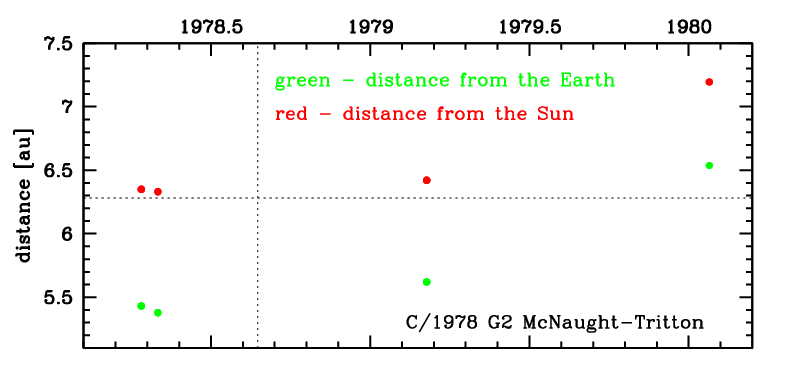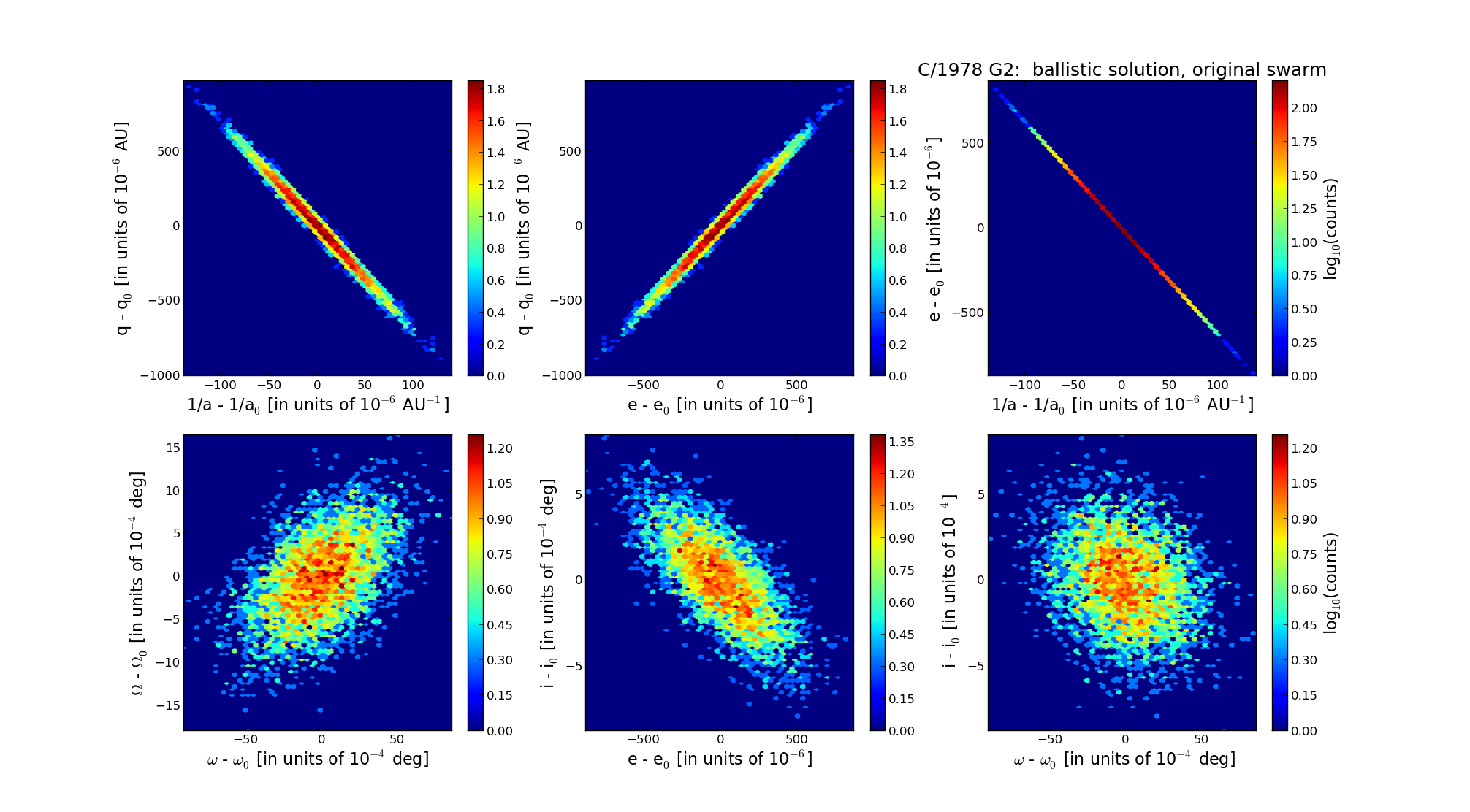C/1978 G2 McNaught
more info
Comet C/1978 G2 was discovered on 12 April 1978, more than four months before its perihelion passage, and was last seen on 23 January 1980 [Kronk and Meyer, Cometography: Volume 5].
The comet made its closest approach to the Earth on 29 April 1978 (5.38 au), that was 17 days after its discovery.
Solution given here is based on data spanning over 1.78 yr in a range of heliocentric distances: 6.35 au – 6.28 au (perihelion) – 7.20 au, however only seven measurements are known for this comet.
This probable Oort spike comet suffers rather small planetary perturbations during its passage through the planetary system.
See also Królikowska 2014 and Królikowska and Dybczyński 2017.
The comet made its closest approach to the Earth on 29 April 1978 (5.38 au), that was 17 days after its discovery.
Solution given here is based on data spanning over 1.78 yr in a range of heliocentric distances: 6.35 au – 6.28 au (perihelion) – 7.20 au, however only seven measurements are known for this comet.
This probable Oort spike comet suffers rather small planetary perturbations during its passage through the planetary system.
See also Królikowska 2014 and Królikowska and Dybczyński 2017.
| solution description | ||
|---|---|---|
| number of observations | 7 | |
| data interval | 1978 04 12 – 1980 01 23 | |
| data type | perihelion within the observation arc (FULL) | |
| data arc selection | entire data set (STD) | |
| range of heliocentric distances | 6.35 au – 6.28 au (perihelion) – 7.2 au | |
| detectability of NG effects in the comet's motion | NG effects not determinable | |
| type of model of motion | GR - gravitational orbit | |
| data weighting | NO | |
| number of residuals | 14 | |
| RMS [arcseconds] | 0.82 | |
| orbit quality class | 1b | |
| orbital elements (barycentric ecliptic J2000) | ||
|---|---|---|
| Epoch | 1671 08 09 | |
| perihelion date | 1978 08 26.69811300 | ± 0.02687000 |
| perihelion distance [au] | 6.28038625 | ± 0.00026610 |
| eccentricity | 1.00014083 | ± 0.00023760 |
| argument of perihelion [°] | 229.651662 | ± 0.002461 |
| ascending node [°] | 72.211404 | ± 0.000457 |
| inclination [°] | 153.162815 | ± 0.000234 |
| reciprocal semi-major axis [10-6 au-1] | -22.42 | ± 37.83 |
| file containing 5001 VCs swarm |
|---|
| 1978g2_s.bmi |

